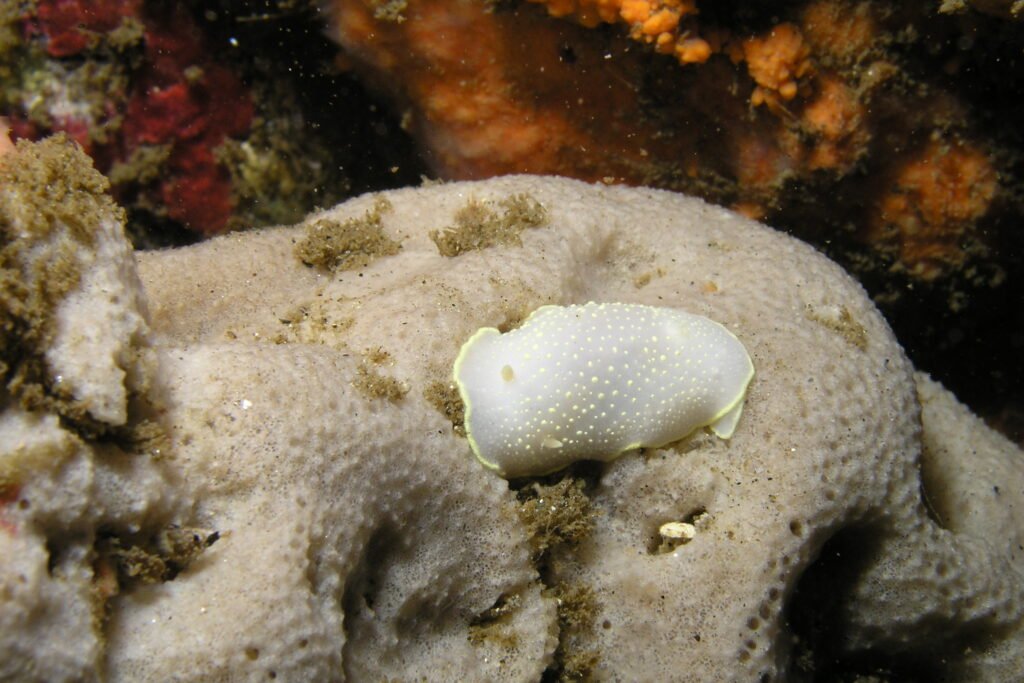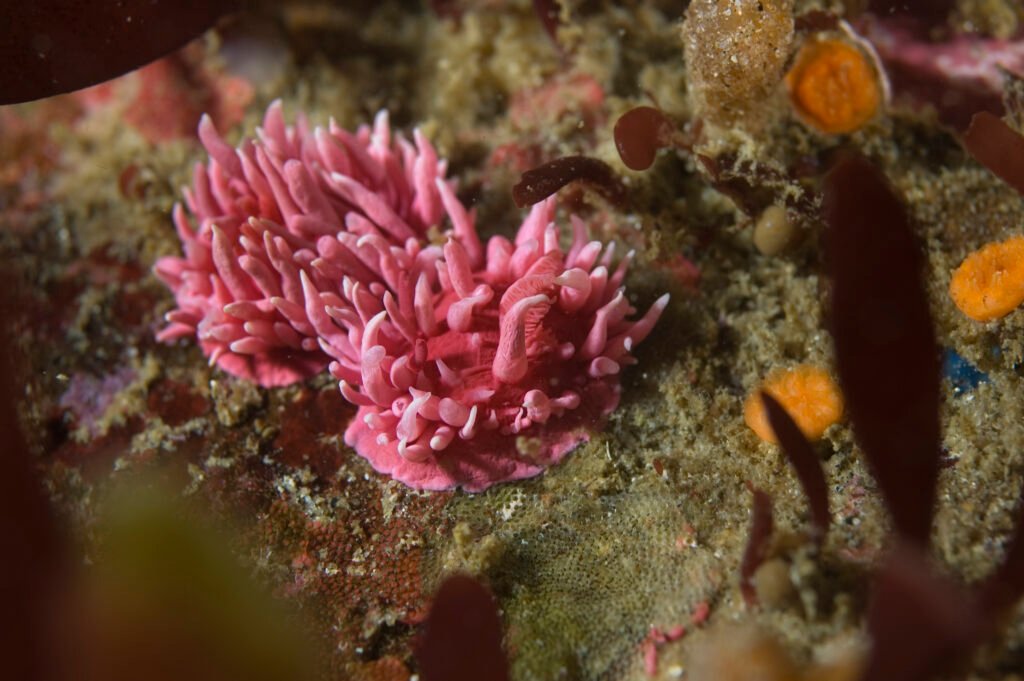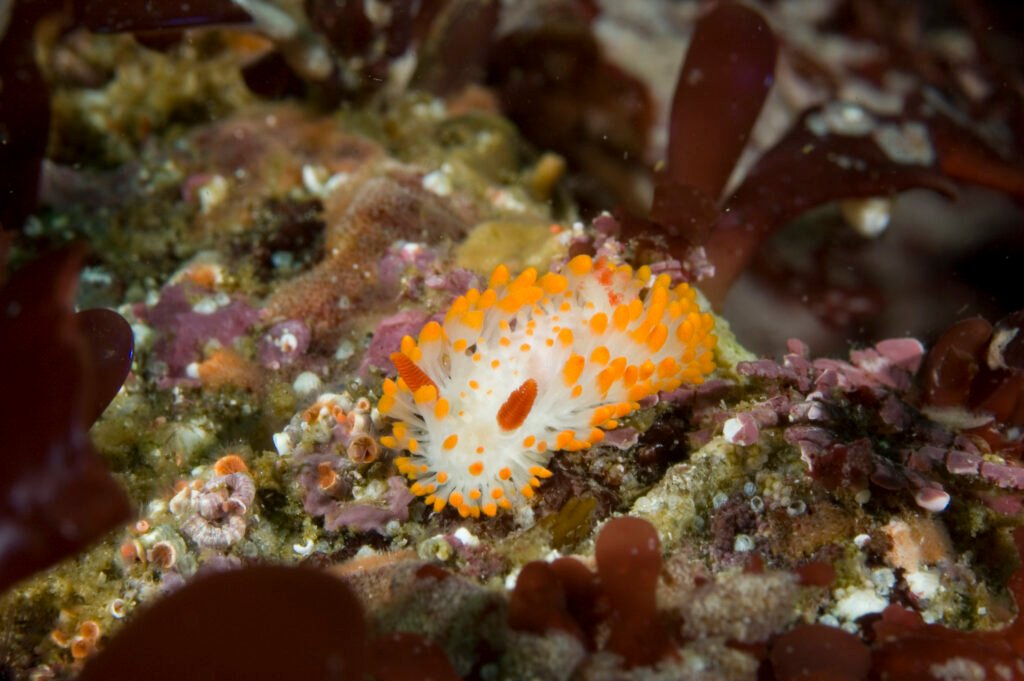Physical Description
The Ridge-tailed Dorid, scientifically known as Diaphorodoris lirulatocauda, features a ground color ranging from white to creamy-white, with mature individuals potentially exhibiting a darker hue mid-dorsally due to creamy gonads below. Its dorsum and dorsal surface of the tail may bear small flecks of opaque white. The dorsum is thickly set with numerous long, slender, white to yellowish-white tubercles, giving the animal a fuzzy appearance. Rhinophores are yellowish-white, typically with 6-10 lamellae, and branchial plumes range from 4-9, appearing unipinnate and yellowish-white. Individuals of this species are usually 10mm or less in length.
Habitat and Geographical Range
The Ridge-tailed Dorid is found along the eastern Pacific coast, inhabiting various marine environments, particularly rocky substrates.
What They Eat and How They Breed
As with other nudibranchs, Diaphorodoris lirulatocauda likely feeds on sessile invertebrates, such as sponges, bryozoans, or tunicates. They are hermaphrodites, meaning each individual possesses both male and female reproductive organs. Reproduction involves reciprocal sperm exchange during mating, followed by the laying of eggs in gelatinous masses on suitable substrates.
Similar Nudibranchs
There are several species of white dorid nudibranchs found in Monterey. For species often mistaken for the ridge-tailed dorid, check out these links.
Hudson’s Dorid
Explore the unique features of Hudson’s Dorid, a whitish-hued nudibranch adorned with yellow-tipped tubercles, found along the eastern Pacific coast in diverse marine habitats.
Yellow-Edged Cadlina
Explore the captivating features of the Yellow-edged Cadlina, a nudibranch species native to the eastern Pacific coast, showcasing cream-to-yellow hues and distinct tubercle patterns.
San Diego Dorid
The San Diego Dorid has an oval body and varied coloration, often found along the eastern Pacific coast feeding on sponges.
White Berthella
Discover the White Berthella, Berthella californica, along the eastern Pacific coast. Learn about its appearance, habitat, diet, reproduction, and interaction with humans.
White Knight Dorid
Discover the elegant White Knight Dorid, a large nudibranch species with a pure white appearance, often exceeding 100mm in length, found along the eastern Pacific coast.
Yellow-Spotted Cadlina
Discover the mesmerizing features of the Yellow-spotted Cadlina, a nudibranch species native to the eastern Pacific coast, adorned with lemon-yellow dots on a cream-colored backdrop.















